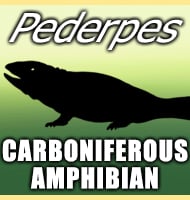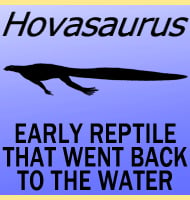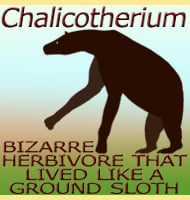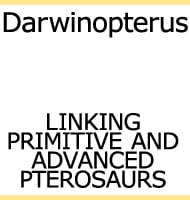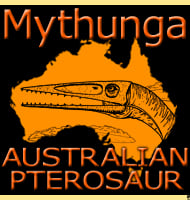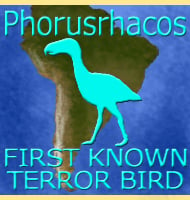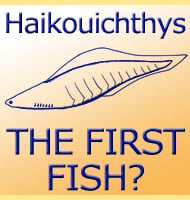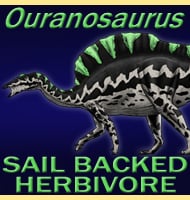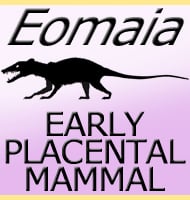In Depth
So the taxonomic history of Monoclonius goes a little something like this. In 1876 multiply dinosaur fossils were recovered from the Judith River in Montana, USA. These fossils were sent to Edward Drinker Cope (One of the two main figures in the Bone Wars) and from these two new dinosaur genera were named, Monoclonius and Diclonius. Cope believed that both of these dinosaurs were hadrosaurs and gave them names which meant ‘single sprout’ and ‘double sprout’, a reference to the observation that Monoclonius had a single row of teeth in use at any one time, and Diclonius had two rows.
In 1889 Othniel Charles Marsh (The other main figure in the Bone Wars) named what would become one of the most famous dinosaurs of all time, Triceratops. Cope made a point to keep up to date with Marsh’s work, and when he saw the work on Triceratops, he realised that he himself had made a mistake. Going over his fossils of Monoclonius, as well as an earlier genus named Agathaumus that he had also named, Cope realised that these two genera when combined with Triceratops would actually represent a whole new group of what would later become known as ceratopsian dinosaurs. When Cope had first named Monoclonius he was unsure how to piece it together, resulting in the incorrect identification of it being a hadrosaur. Now armed with the knowledge of Triceratops however, Cope re-assembled his Monoclonius fossils, identifying the horn core, neck frill, and cervical (neck) vertebrae, which he originally thought were dorsal (back) vertebrae. This resulted in a re-description published later in 1889, which saw Monoclonius reconstructed as a ceratopsian dinosaur with a single large horn rising up from its nasal bone. However cope achieved this by adding additional fossil specimens to his existing Monoclonius fossils. This was also the start of the confusion about the meaning of the name Monoclonius with many people interpreting it as meaning ‘single horn’ when in fact it still meant ‘single sprout’ with a continued reference to the teeth.
After this Monoclonius became what is known as a ‘wastebasket taxon’, with any other slightly similar ceratopsian fossils being assigned to Monoclonius. Even when the fossils were clearly different, they would simply become a new species, and eventually the Monoclonius genus would attain nearly twenty species. Perhaps the main reason why this happened is because what we now call the centrosaurine ceratopsians commonly have single large horns, and short neck frills, just like what Monoclonius was perceived to have had.
In 1895 Cope sold much of his fossil collection to the American Museum of Natural History in order to keep funding his work (The Bone Wars had a terrible effect upon the personal finances of both Cope and Marsh). After the deaths of both Cope and Marsh, John Bell Hatcher, a former worker of Marsh’s was assigned the task of completing Marsh’s unfinished monograph on ceratopsian dinosaurs, this time including Copes fossils. When Hatcher got round to the type specimen of Monoclonius, he concluded that it was actually based upon the fossils of several dinosaurs, not all of them necessarily representing the same individual. This was finally published in 1907 after hatcher himself died and the monograph was finished by Richard Swann Lull.
This was not the beginning of serious doubts about the Monoclonius genus, in 1904, fossils of two species were used to create a new genus called Centrosaurus, which is today the type genus of the Centrosaurinae. Other former species of Monoclonius have now been largely re-assigned into other genera including Avaceratops, Brachyceratops, Chasmosaurus, Eoceratops and Styracosaurus, while fossils that were not have often been described as too indeterminate.
Palaeontologists have always been at odds over how valid Monoclonius is however. Lawrence Lambe considered Centrosaurus to be very distinct from Monoclonius, while Barnum Brown thought that all Monoclonius species named at that time were synonymous with the type species that had been based upon eroded fossils. In 1933 Richard Lull published a paper citing that Centrosaurus should be a sub genus to Monoclonius, while in 1938 Charles Mortram Sternberg claimed that Monoclonius fossils were slightly older than Centrosaurus fossils, and that Monoclonius was a probable ancestor to Centrosaurus. In 1990 Peter Dodson noted a clear difference in the parietal bone, while a 1997 study (Sampson et al) concluded that all remaining Monoclonius fossils were dubious because analysis of the bone indicated that they were either juveniles or subadults. A counter paper in 1998 by Dodson and Tumarkin was of the opinion that these juvenile features had been retained in adulthood, and noted that one of the M. lowei holotype had the longest known interparietal bones of any centrosaurine ceratopsian dinosaur. A 2006 paper by Michael Ryan however confirmed that the holotype skull of M. lowei was indeed a subadult, though one of exceptional size.
With the history behind us, the state of Monoclonius at the time of writing is that it is usually treated as a dubious genus of ceratopsian dinosaur by most authors. This is because the remains of the type species M. crassus are not very diagnostic, which makes it difficult to establish the holotype of the species M. lowei with certainty, though it has also been considered to be synonymous with the type species. With the history done with, there really isn’t that much more to say about Monoclonius, though briefly going on the assumption that Monoclonius does actually represent a valid genus, then Monoclonius would have been a mid-sized centrosaurine ceratopsian dinosaur, perhaps most similar to Centrosaurus in form.
In popular science and fiction Monoclonius was once one of the staple ceratopsian dinosaurs that would be included in works about dinosaurs, sometimes even rivalling Triceratops and Styracosaurus for popularity. The most iconic appearance of Monoclonius in recent times was in the 1984 classic short Prehistoric Beast, a go motion animation which featured an encounter between a Monoclonius and a Tyrannosaurus, and something that is well remembered by anyone who grew up in the 1980s.
Further Reading
- Descriptions of some vertebrate remains from the Fort Union Beds of Montana. - Proceedings of the Academy of Natural Sciences of Philadelphia 28: 248-261. - Edward Drinker Cope - 1876. - On Reptilian remains from the Dakota Beds of Colorado. - Paleontological Bulletin, 26: 193-197. - Edward Drinker Cope - 1877. - The horned Dinosauria of the Laramie. - American Naturalist, 23: 715-717. - Edward Drinker Cope - 1889. - New genera and species from the Belly River Series (mid-Cretaceous). - Geological Survey of Canada Contributions to Canadian Palaeontology 3(2): 25-81. - Lawrence M. Lambe - 1902. - On the squamoso-parietal crest of the horned dinosaurs Centrosaurus apertus and Monoclonius canadensis from the Cretaceous of Alberta. - Transactions of the Royal Society of Canada, series 2 10(4): 1-9. Lawrence M. Lambe - 1904. - The Ceratopsia - Monographs of the United States Geological Survey 49, 198 pages. - O. C. Marsh, J. B. Hatcher & R. S. Lull - 1907. - A complete skull of the horned dinosaur Monoclonius, from the Belly River of Alberta. - Bulletin of the American Museum of Natural History, 33: 549–558. - Barnum Brown - 1914. - On Eoceratops canadensis, gen. nov., with remarks on other genera of Cretaceous horned dinosaurs. - Canada Geological Survey Museum Bulletin 12, Geological Series 24: 1-49. - Lawrence M. lambe - 1915. - A complete skeleton of the horned dinosaur Monoclonius, and description of a second skeleton showing skin impressions. - Bulletin of the American Museum of Natural History, 35: 709–716. - Barnum Brown - 1917. - A revision of the Ceratopsia or horned dinosaurs. - Memoirs of the Peabody Museum of Natural History 3(3): 1-175. - Richard S. Lull - 1933. - Monoclonius from southeastern Alberta compared with Centrosaurus. - Journal of Palaeontology, 12(3): 284-286. - C. M. Sternberg - 1938. - The ceratopsian subfamily Chasmosaurinae: sexual dimorphism and systematics - T. M. Lehman - In. Dinosaur Systematics: Perspectives and Approaches pp211-229, Cambridge University Press - Kenneth Carpenter & Philip J. Currie - 1990. - On the status of the ceratopsids Monoclonius and Centrosaurus - P Dodson - In. Dinosaur Systematics: Perspectives and Approaches pp211-229, Cambridge University Press - Kenneth Carpenter & Philip J. Currie - 1990. - Why Monoclonius Cope Was Not Named for Its Horn: The Etymologies of Cope’s Dinosaurs. - Journal of Vertebrate Paleontology (Journal of Vertebrate Paleontology, Vol. 12, No. 3) 12 (3): 313–317. - B. S. Creisler - 1992. - Craniofacial ontogeny in centrosaurine dinosaurs (Ornithischia: Ceratopsidae): taxonomic and behavioral implications. - Zoological Journal of the Linnean Society, 121: 293–337. - S. D. Sampson, M. J. Ryan & D. H. Tanke - 1997. - A heterochronic analysis of enigmatic ceratopsids. - Journal of Vertebrate Paleontology, 18(supplement): 83A. - A. R. Tumarkin & P. Dodson - 1998. - The status of the problematic taxon Monoclonius (Ornithischia: Ceratopsidae) and the recognition of adult-sized dinosaur taxa. - Geological Society of America Abstracts with Programs, 38(4): 62. - Michael J. Ryan - 2006.

